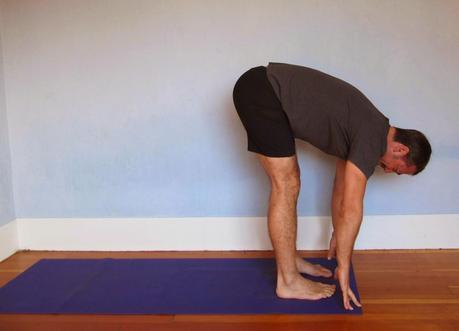
Standing Forward Bend (Uttanasana)
One of our readers left the following comment on our post Featured Sequence: Mini Sun Salutation:I am surprised you are including a deep forward bend. Research supports avoiding forward bends in osteoporosis and osteopenia and considering there are over 54 million people with osteoporosis and many don't know they are osteoporotic it seems safer not to teach forward bends for healthy aging. I think we have a higher percentage of yoga practitioners who fit the risk profile....slight, female, white, especially if they had a restricted diet in their younger years.
This reader is concerned about practitioners who may have osteoporosis doing deep forward bends as we showed in our Mini Sun Salutation. And, indeed, for those with OP or even undiagnosed OP (they have it but don’t know it yet) forward folds hold the potential of increasing the risk of the most common fracture in those with OP: a wedge fracture of the thoracic spine. So, if you fall into this camp, I’d recommend modifying your standing forward bends by allowing your knees to bend as much as you need to help release your pelvis over the thigh bones as you bend, and maintain a more neutral alignment of your spine as you go down. That means avoiding rounding your upper back in the area of your thoracic spine.
I have a student in one of my class in her late 60s with recently diagnosed OP, and we discussed her modifying her forward bends in just this way for poses such as Standing Forward Bend (Uttanasana) and Widespread Standing Forward Bend (Prasarita Padottansana), and she has been diligent about doing so.
Having said all that, I’d like you to keep in mind that our blog is not just for older adults who might have or be at risk for OP—or any condition for that matter. So, the Mini Sun Salutation post was really just an opportunity for us to share with you a basic common modern yoga practice that you can refer to as needed. We will try to add in a few more cautions to these sequences in the future, but you should always read our posts on yoga poses and sequences through the lens of your own personal situation, and take good care of yourself by making any modifications to the poses to better serve your needs. And if you are uncertain as to the safety or appropriateness of any YFHA recommendations, check things out with your local teachers.
—Baxter
Subscribe to YOGA FOR HEALTHY AGING by Email ° Follow Yoga for Healthy Aging on Facebook

